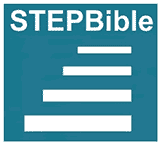Polycarp, Bishop of Smyrna (c.69 - c.155)
Theology on the Web helps over 2.5 million people every year to find high quality theological resources that will help to equip them to serve God and to know Him better (2 Timothy 2:15). Like other websites that provide free services, it is dependent on donations to enable it to grow and develop and only 0.004% of visitors currently do so. If you would like to support this site, please use one of the options to the right of this message.
POLYCARP, Bishop of Smyrna. Though Polycarp is one of the most celebrated characters in ancient Christendom, very little is known of his life. According to the account of his pupil, Irenaeus, he was himself a pupil of the apostles, more especially of John, and had conversed with many who had seen the Lord in the flesh. According to Tertullian (De praescriptione, 32) and Jerome (Catal. scr. ecci., 17), he was consecrated Bishop of Smyrna by John. From the latter part of his life we know, that, while Anicetus was Bishop of Rome, he visited that city in order to establish uniformity throughout the Christian Church with respect to the term of the celebration of Easter. He did not succeed. But, on the other hand, the difference did not destroy the church communion; Polycarp participating in the Lord’s Supper while in Rome. See Eusebius: Hist. Fed., V. 23.
A more detailed account has come down to us of his martyrdom. The Martyrium Polycarpi was known to Eusebius, who incorporated all its chief events with his church history. It was first edited (Latin and Greek), but incomplete, by Halloix, then by Ussher, Ruinart, and others. The best edition is that by Zahn, in his Patr. Apost. Oper. Valesius declared those Acts the oldest of the kind; and the genuineness of the document was generally accepted, until Lipsius, and, after him, Keim, raised some doubt. Lipsius dates the Acts at about 260; and his reasons are, the high-pitched reverence for the martyrs, an indication of the use of the Roman Easter-term, and the occurrence of the categorical expression, "the Catholic Church." But that expression was by no means new in 167. The hint at the Roman Easter-term, if really found, would compel us to fix the date of the document much later, which is impossible on account of Eusebius; and, finally, the reverence for the martyrs chimes in very well with the time. The only doubt which can be justly entertained with respect to the document is about its perfect authenticity. It may have been altered here and there, or subjected to interpolations.
About the year of the death of Polycarp, there has, of late, been much controversy. Eusebius fixes it, both in his Chronicle and in his church history, at 166; Jerome, at 167. In the chronological appendix to the Acts, Statius Quadratus is mentioned as proconsul of Asia and, in his Cotlectanea ad Aristidis vitani, Masson computed the proconsular year of Quadratus at 165-166. Waddington, however, hi his Mémoire sur Ia chronologie de la vie du rhéteur Ælius Aristide, in the Mém. de [1863] l’Institut, 1867, vol. 85, computed the year of office of Quadratus at 155-156, and consequently fixed the death of Polycarp at Feb. 23, 155. His computation was immediately adopted by Renan, Aubé, Hilgenfeld, Gebhardt, Harnack, and others. Nevertheless, it involves very great difficulties, as, for instance, the visit of Polycarp to Rome while Anicetus was bishop; and it rests merely on a series of ingenious hypotheses. Quadratus is only mentioned in the chronological appendix, and that appendix is most probably a later and consequently worthless addition. The Acts themselves simply state that the martyrdom took place on Saturday, the 16th of Nisan; and the 16th of Nisan was a Saturday, both in 166 and in 155.
Of the letters of Polycarp, all have perished, with the exception of one to the Philippians. It was first published in Latin by Faber Stapulensis (1498), then in Greek by Halloix (1633), and afterwards often: the best edition is that by Zahn. As it contains a direct reference to the letters of Ignatius, all critics who reject those letters as spurious have tried to make its genuineness suspected. It was known: however, to, and accepted by, 1renaeus, Eusebius, and Jerome; and it is difficult to understand how a spurious letter of Polycarp could have been brought into general circulation at the time when Irenaeus wrote (about 180), and still more difficult to understand how it could be accepted by him, the pupil of Polycarp. [L. DUCHESNE Vita sancti Poly. Smyr. episcopi auctore Pionio prim. Or. ed., Paris, 1881; LIGHTFOOT: Apostolic Fathers, Pt. II., 1885.]
G. Umlhorn, "POLYCARP," Philip Schaff, ed., A Religious Encyclopaedia or Dictionary of Biblical, Historical, Doctrinal, and Practical Theology, 3rd edn, Vol. 3. Toronto, New York & London: Funk & Wagnalls Company, 1894. pp.1863-64.
Primary Sources
| Eusebius, Church History 3.36.1, 10; 4.14.1-9; 5.20.4-8. | |
| Ireneaus, Against Heresies 3.3.4 | |
| J.B. Lightfoot, Apostolic Fathers, Part 2, Vol. 3. London: Macmillan, 1885. pp.897-1086. | |
| Polycarp (Christian Classic Ethereal Library) | |
| Tertullian, Against Heresies 32.2 | |
![Blomfield Jackson [1839-1906], St Polycarp. Bishop of Smyrna](images/books3/st-polycarp_jackson-tb.jpg) Blomfield Jackson [1839-1906], St Polycarp. Bishop of Smyrna. London: SPCK, 1898. Hbk. pp.78. Blomfield Jackson [1839-1906], St Polycarp. Bishop of Smyrna. London: SPCK, 1898. Hbk. pp.78. |
|
 Kirsopp Lake, translator, The Apostolic Fathers. I Clement, II Clement, Ignatius, Polycarp, Didache, Barnabas, The Shepherd of Hermas, The Martyrdom of Polycarp, The Epistle to Diognetus, 2 Vols. London: William Heinemann, 1925. Hbk. pp.409+396. Kirsopp Lake, translator, The Apostolic Fathers. I Clement, II Clement, Ignatius, Polycarp, Didache, Barnabas, The Shepherd of Hermas, The Martyrdom of Polycarp, The Epistle to Diognetus, 2 Vols. London: William Heinemann, 1925. Hbk. pp.409+396. |
|
| Alexander Roberts [1826-1901] & James Donaldson [1831-1915], eds., The Ante-Nicene Fathers, Translations of the Fathers down to A.D. 325, Vol. 1: The Apostolic Fathers—Justin Martyr—Irenaeus. Buffalo, NY: The Christian Literature Publishing Company, 1887. Hbk. pp.602. |
Secondary Sources
| Kenneth Berding, "Polycarp of Smyrna's View of the Authorship of 1 and 2 Timothy," Vigiliae Christianae 53.4 (1999): 349-360. | ||
| Kenneth Berding, Polycarp and Paul: An Analysis of Their Literary and Theological Relationship in Light of Polycarp's Use of Biblical and Extra-biblical Literature. Vigiliae Christianae, Supplements. Leiden: Brill, 2002. Hbk. ISBN: 9004126708. pp.240. | ||
| F.L. Cross, The Early Christian Fathers. Studies in Theology 1. London: Gerald Duckworth & Co. Ltd., 1960. Hbk. pp.19-21. | ||
| B. Dehandschutter,"The Martyrium Polycarpi; a century of research," Aufsticg und Niedergang der römischen Welt II.27,1. Berlin,1993.pp.485-522. | ||
![William John Ferrar [1868-1945], The Early Christian Books. Handbooks of Christian Literature](images/books3/early-christian-books_ferrar-tb.jpg) William John Ferrar [1868-1945], The Early Christian Books. Handbooks of Christian Literature. London: SPCK, 1919. Hbk. pp.108. William John Ferrar [1868-1945], The Early Christian Books. Handbooks of Christian Literature. London: SPCK, 1919. Hbk. pp.108. |
||
| W.H.C. Frend, "Note on the Chronology of the Martyrdom of Polycarp and the Outbreak of Montanism," J. Courcelle et al, eds. Oikoumene: Studi Paleocristani. Rome, 1964. pp.499-506. | ||
| Percy Neal Harrison, Polycarp's Two Epistles to the Phillipians. Cambridge: Cambridge University Press, 1936. | ||
| Paul Hartog, "Polycarp, Ephesians, and 'Scripture'," Westminster Theological Journal 70.2 (Fall 2008): 255-275.. | ||
| Michael W. Holmes, "A Note on the Text of Polycarp, Philippians 11, 3," Vigiliae Christianae 51.2 (1997): 207-210. | ||
![Fenton John Anthony Hort [1828–1892], Six Lectures on the Ante-Nicene Fathers](images/books3/ante-nicene-fathers_hort-tb.jpg) Fenton John Anthony Hort [1828–1892], Six Lectures on the Ante-Nicene Fathers. London & New York: MacMillan & Co., 1895. Hbk. pp.138. Fenton John Anthony Hort [1828–1892], Six Lectures on the Ante-Nicene Fathers. London & New York: MacMillan & Co., 1895. Hbk. pp.138. |
||
| Polycarp to the Philippians (Peter Kirby) | ||
| The Martyrdom of Polycarp (Peter Kirby) | ||
 H. Koester, Introduction to
the New Testament, 2nd edn., Vol. 2. Walter de Gruyter, 2000. Pbk. ISBN:
3110149702. pp.400. H. Koester, Introduction to
the New Testament, 2nd edn., Vol. 2. Walter de Gruyter, 2000. Pbk. ISBN:
3110149702. pp.400. |
||
| Harry O. Maier, "Purity and Danger in Polycarp's Epistle to the Philippians: The Sin of Valens in Social Perspective," Journal of Early Christian Studies 1.3 (1993): 229-247. | ||
| Charles M. Neilsen, "Polycarp, Paul and the Scriptures," Anglican Theological Review 47 (1965): 199-216. | ||
 |
 David Ivan Rankin, From Clement to Origen. The Social and Historical Context of the Church Fathers. London: Routledge, 2016. ISBN: 9781317132424. pp.182. [Sign-up to Perlego and access book instantly] David Ivan Rankin, From Clement to Origen. The Social and Historical Context of the Church Fathers. London: Routledge, 2016. ISBN: 9781317132424. pp.182. [Sign-up to Perlego and access book instantly] |
|
| W.R. Schoedel, Polycarp, Martyrdom of Polycarp, Fragments of Papias. Camden: Nelson, 1967. | ||
| W.R. Schoedel, "Polycarp's Witness to Ignatius of Antioch," Vigiliae Christianae 41.1 (1987): 1-10. | ||
 Ruth A. Tucker, From Jerusalem to Irian Jaya: A Biographical History of Christian Missions, 2nd edn. Grand Rapids: Zondervan, 2004. Hbk. ISBN-13: 978-0310239376. pp.30-32. Ruth A. Tucker, From Jerusalem to Irian Jaya: A Biographical History of Christian Missions, 2nd edn. Grand Rapids: Zondervan, 2004. Hbk. ISBN-13: 978-0310239376. pp.30-32. |
Biographies
![Frederic William Farrar [1831-1903], Lives of the Fathers. Sketches of Church History in Biography, 2 Vols](images/books3/lives-of-the-fathers_farrar-tb.jpg) Frederic William Farrar [1831-1903], Lives of the Fathers. Sketches of Church History in Biography, 2 Vols. London: Adam & Charles Black, 1907. Hbk. pp.781+737. Frederic William Farrar [1831-1903], Lives of the Fathers. Sketches of Church History in Biography, 2 Vols. London: Adam & Charles Black, 1907. Hbk. pp.781+737. |
|
![Henry Scott Holland [1847-1918], The Apostolic Fathers. The Fathers for English Readers](images/books3/apostolic-fathers_holland-tb.jpg) Henry Scott Holland [1847-1918], The Apostolic Fathers. The Fathers for English Readers. London: SPCK, 188?. Hbk. pp.223. Henry Scott Holland [1847-1918], The Apostolic Fathers. The Fathers for English Readers. London: SPCK, 188?. Hbk. pp.223. |
Related Subjects
 |
|
 |
|
 |








